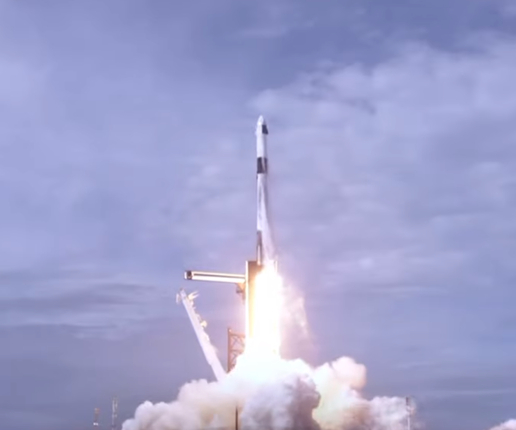NASA, SpaceX complete successful test of Crew Dragon abort system
SpaceX’s Crew Dragon completes final major flight test before it begins carrying astronauts to the International Space Station.

Source | NASA
NASA (Washington, D.C., U.S.) and SpaceX (Hawthorne, Calif., U.S.) completed a launch escape demonstration of the company’s Crew Dragon spacecraft and Falcon 9 rocket January 19. This was the final major flight test of the spacecraft before it begins carrying astronauts to the International Space Station under NASA’s Commercial Crew Program, which is working with the American aerospace industry as companies develop and operate a new generation of spacecraft and launch systems capable of carrying crews to low-Earth orbit and the International Space Station.
The launch escape test was conducted to test the spacecraft’s capability to safely separate from the rocket in the unlikely event of an inflight emergency.
“This critical flight test puts us on the cusp of returning the capability to launch astronauts in American spacecraft on American rockets from American soil,” said NASA Administrator Jim Bridenstine. “We are thrilled with the progress NASA’s Commercial Crew Program is making and look forward to the next milestone for Crew Dragon.”
As part of the test, SpaceX configured Crew Dragon to trigger a launch escape about 1.5 minutes after liftoff. All major functions were executed, including separation, engine firings, parachute deployment and landing. Crew Dragon splashed down just off the Florida coast in the Atlantic Ocean.
“As far as we can tell thus far, it’s a picture perfect mission. It went as well as one can possibly expect," said Elon Musk, Chief Engineer at SpaceX.
Teams of personnel from SpaceX and the U.S. Air Force 45th Operations Group’s Detachment-3 out of Patrick Air Force Base are workint to recover the spacecraft for return to SpaceX facilities in Florida and begin the recovery effort of the Falcon 9, which broke apart as planned.
“Today, we watched the demonstration of a system that we hope to never use, but can save lives if we ever do,” said astronaut Doug Hurley.
Prior to the flight test, teams completed launch day procedures for the first crewed flight test, from suit-up to launch pad operations. The joint teams now will begin the full data reviews that need to be completed prior to NASA astronauts flying the system during SpaceX’s Demo-2 mission.
Related Content
-
Plant tour: Spirit AeroSystems, Belfast, Northern Ireland, U.K.
Purpose-built facility employs resin transfer infusion (RTI) and assembly technology to manufacture today’s composite A220 wings, and prepares for future new programs and production ramp-ups.
-
Composites manufacturing for general aviation aircraft
General aviation, certified and experimental, has increasingly embraced composites over the decades, a path further driven by leveraged innovation in materials and processes and the evolving AAM market.
-
Plant tour: Joby Aviation, Marina, Calif., U.S.
As the advanced air mobility market begins to take shape, market leader Joby Aviation works to industrialize composites manufacturing for its first-generation, composites-intensive, all-electric air taxi.
















